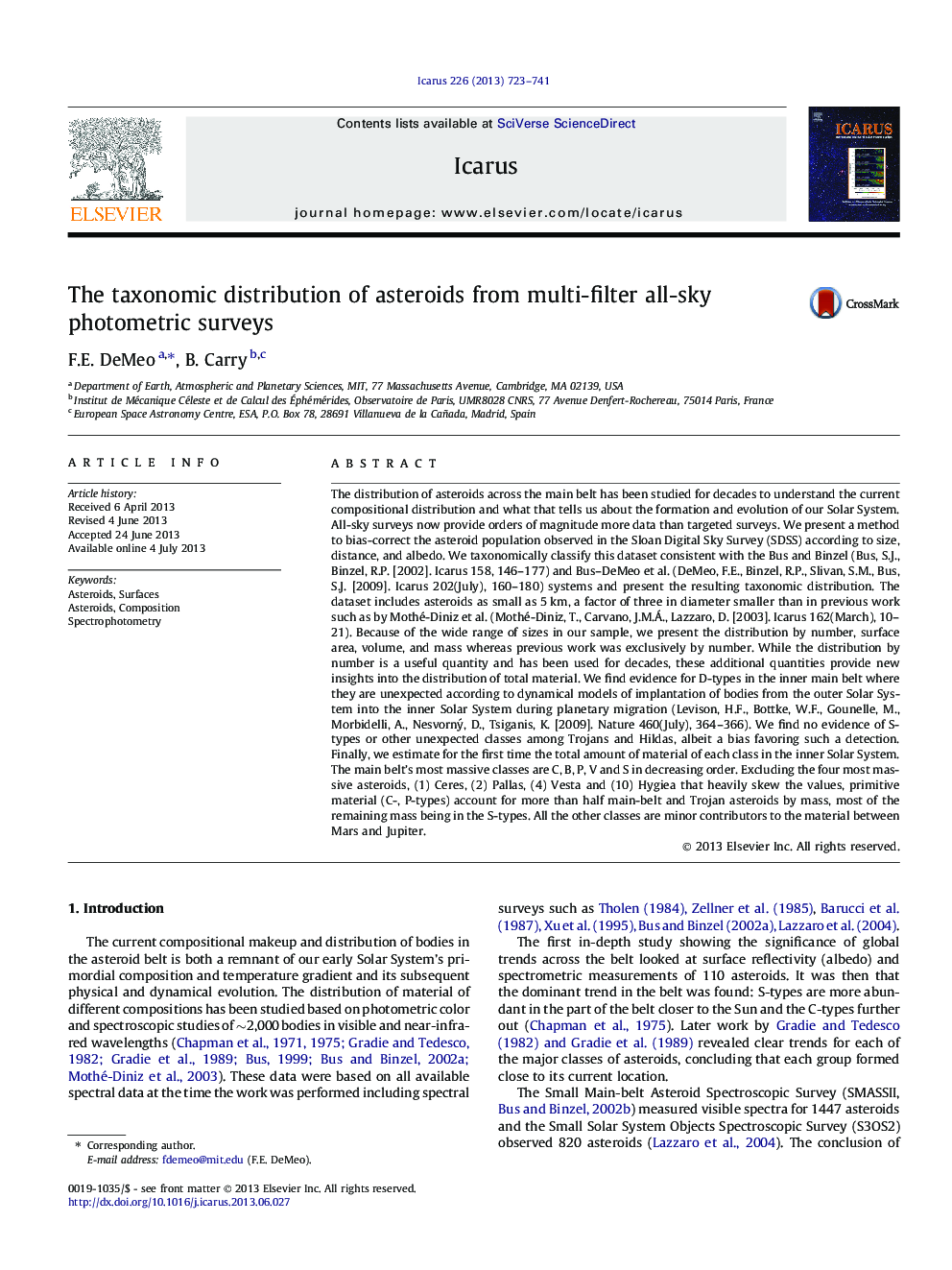| Article ID | Journal | Published Year | Pages | File Type |
|---|---|---|---|---|
| 10701337 | Icarus | 2013 | 19 Pages |
Abstract
The distribution of asteroids across the main belt has been studied for decades to understand the current compositional distribution and what that tells us about the formation and evolution of our Solar System. All-sky surveys now provide orders of magnitude more data than targeted surveys. We present a method to bias-correct the asteroid population observed in the Sloan Digital Sky Survey (SDSS) according to size, distance, and albedo. We taxonomically classify this dataset consistent with the Bus and Binzel (Bus, S.J., Binzel, R.P. [2002]. Icarus 158, 146-177) and Bus-DeMeo et al. (DeMeo, F.E., Binzel, R.P., Slivan, S.M., Bus, S.J. [2009]. Icarus 202(July), 160-180) systems and present the resulting taxonomic distribution. The dataset includes asteroids as small as 5 km, a factor of three in diameter smaller than in previous work such as by Mothé-Diniz et al. (Mothé-Diniz, T., Carvano, J.M.Á., Lazzaro, D. [2003]. Icarus 162(March), 10-21). Because of the wide range of sizes in our sample, we present the distribution by number, surface area, volume, and mass whereas previous work was exclusively by number. While the distribution by number is a useful quantity and has been used for decades, these additional quantities provide new insights into the distribution of total material. We find evidence for D-types in the inner main belt where they are unexpected according to dynamical models of implantation of bodies from the outer Solar System into the inner Solar System during planetary migration (Levison, H.F., Bottke, W.F., Gounelle, M., Morbidelli, A., Nesvorný, D., Tsiganis, K. [2009]. Nature 460(July), 364-366). We find no evidence of S-types or other unexpected classes among Trojans and Hildas, albeit a bias favoring such a detection. Finally, we estimate for the first time the total amount of material of each class in the inner Solar System. The main belt's most massive classes are C, B, P, V and S in decreasing order. Excluding the four most massive asteroids, (1) Ceres, (2) Pallas, (4) Vesta and (10) Hygiea that heavily skew the values, primitive material (C-, P-types) account for more than half main-belt and Trojan asteroids by mass, most of the remaining mass being in the S-types. All the other classes are minor contributors to the material between Mars and Jupiter.
Related Topics
Physical Sciences and Engineering
Earth and Planetary Sciences
Space and Planetary Science
Authors
F.E. DeMeo, B. Carry,
